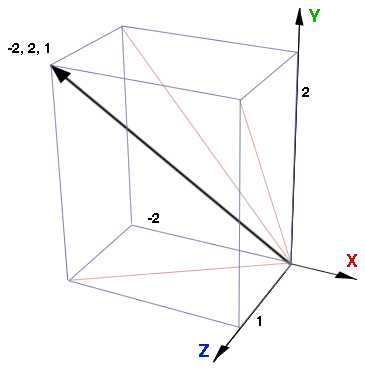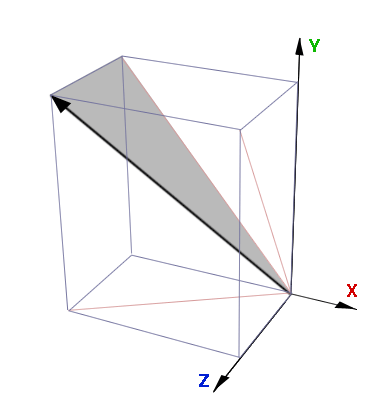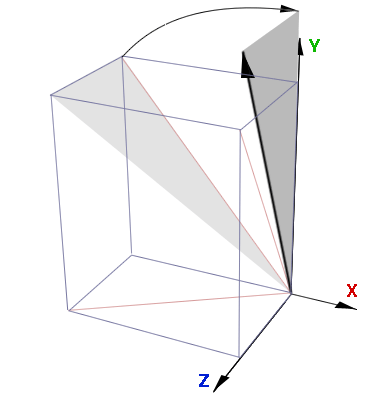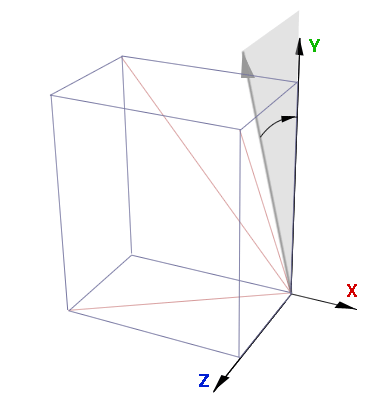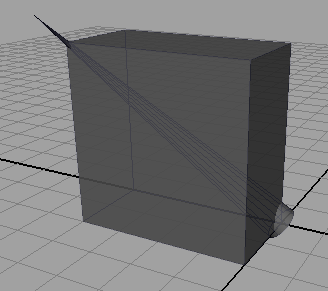Angles
Figure 6 shows two angles that must be calculated in order to perform steps 2
and 3. To find the blue angle we must first calculate the length of the red
trace line, xyLength, on the x-y plane ie.
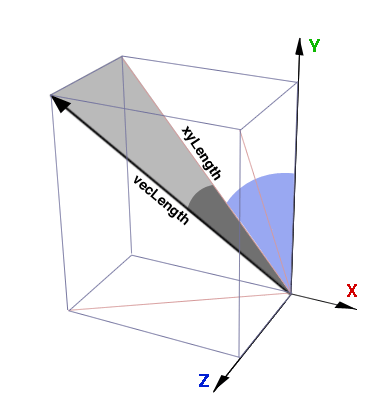
Figure 6 - the two principle angles
xyLength = sqrt(x * x + y * y);
xyLength = sqrt(-2 * -2 + 2 * 2);
xyLength = 2.83;
After which the angle shown in blue can be found,
zAngle = acos(y / xyLength);
zAngle = acos(2.0 / 2.83);
zAngle = 0.785; /* acos returns angle in radians */
To find the dark gray angle the length of the vector must be found,
vecLength = sqrt(x * x + y * y + z * z);
vecLength = sqrt(-2 * -2 + 2 * 2 + 1 * 1);
vecLength = 3.0;
As with the blue angle the angle in dark gray is found from the cosine.
I am referring to this angle as the xAngle because, as shown in Fig 4,
this angle will be used to define the rotation around the x-axis.
xAngle = acos(xyLength / vecLength);
xAngle = acos(2.83 / 3.0);
xAngle = 0.338;
Expressed in degrees the zAngle is 45.0 and the xAngle is
19.4. Therefore, the rotations needed to orientate the y-axis in the
direction of the vector requires,
- a rotation around the x-axis of 19.4 degrees, then,
- a rotation around the z-axis of -45 degrees
A mel procedure that implements this technique is given in listing 1.
|
